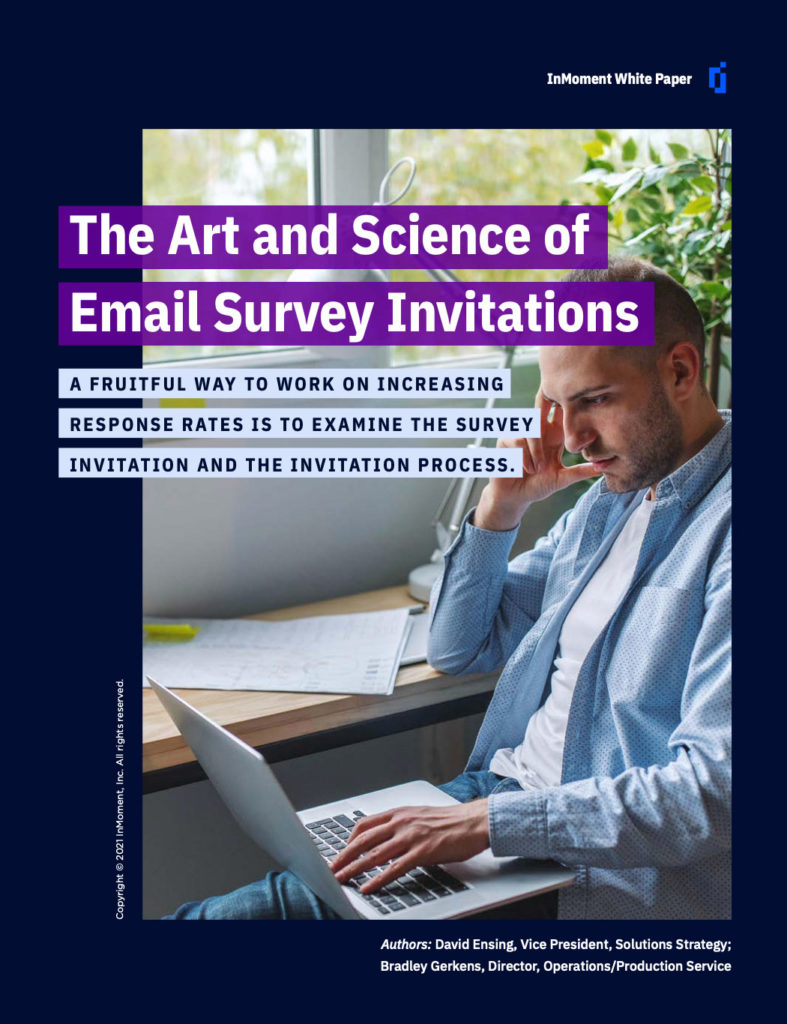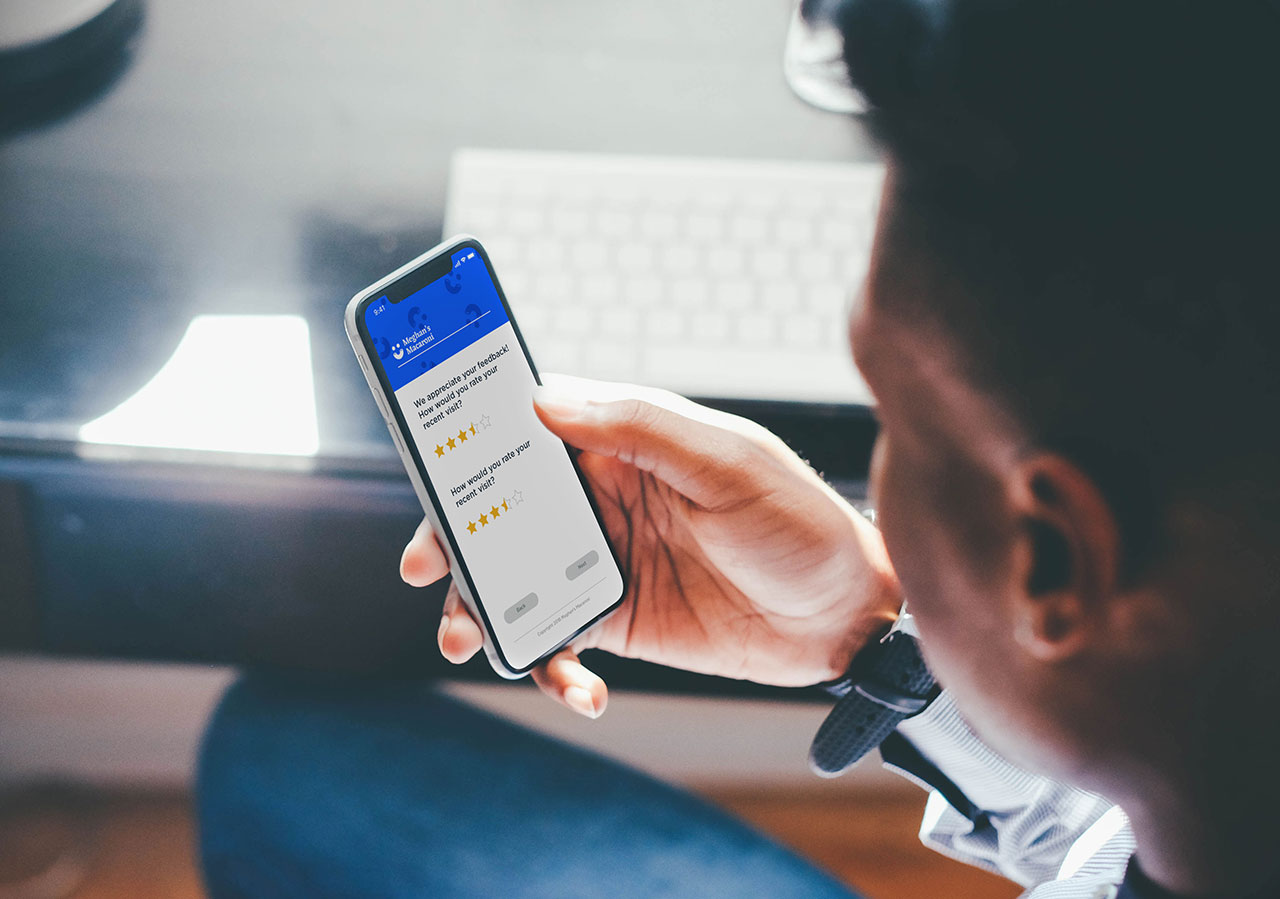When you’re looking to gather large amounts of data from customers, surveys are one of the most effective ways to do so. But a key to getting good, usable data is to have enough customers take the survey. You can send your survey out to hundreds of people, but not everyone will take the survey, and that can affect how much information you actually gather from your target audience. To figure out how many people actually took a survey, you need the survey response rate.
Response rate is how many people actually answered your survey. For example, if you sent out a digital survey via email to 400 people, that isn’t your response rate. That is how many people you contacted. If 350 of those people opened the survey and responded, that is the number that will be your response rate for the survey. We’ll walk you through the intricacies of response rate for surveys to help your company improve how many people respond to your surveys.
Why Response Rate Matters
Survey response rates show how many of your customers actually answered your invitation to provide feedback on your company or products. While response rate isn’t the only important metric, it can give you an idea of how your customers are responding to your company.
More importantly, a better response rate means your company receives more valuable feedback. With your survey feedback, your team has the opportunity to incorporate customer insights into your brand, website, and products. Survey insights give you the chance to hear from customers and understand their experience with your company—and the opportunity to improve customer experience and relationships with your customers.

WHITE PAPER
The Art and Science of Email Survey Invitations
The problem with your survey response rate may not be the survey itself. In fact, most non-responses are due to people not participating in the survey at all. Hence the question: what is in an invitation?
How to Calculate a Survey’s Response Rate
It is fairly simple to calculate a survey’s response rate. To calculate the response rate, you’ll need two numbers: number of surveys sent and number of completed surveys. The formula for response rate is the number of completed responses divided by the number of surveys sent. Finally, the number is converted to a percentage. You should deduct factors like bad email addresses or out-of-office responses from your sample size, which could slightly improve your response rate.
So if you sent out 1,000 surveys and got 200 completed responses, your response rate would be 20%. If you sent out 50 surveys and got 10 completed responses and 10 out-of-office responses, your response rate would still be 20% as well. If you sent out 1,213 surveys and got 344 completed responses, your response rate would be 28.3%. However many surveys you sent out and received, calculating your response rate is a simple process, yet it can offer valuable feedback for your company.
What Is a Good Response Rate
The big question everyone crafting surveys wants answered is, “But what is a good response rate?” It’s one thing to know that your response rate is 20%, but if you don’t know what that 20% actually means, it’s difficult to know how your response rate is performing compared to other surveys. Answering what a good response rate is can also be tricky. The ideal response rate will vary from survey to survey, company to company, and target audience to target audience. In general, the higher the response rate, the better. A 50% response rate would be amazing.
That being said, achieving high response rates like 50% can be difficult in practice. In reality, a good response rate is between 5–30%. Your team should aim to get a response rate within those parameters, and response rates of 5–30% are often achievable with the right strategies and tools. If your surveys are getting a low response rate, you can still find meaningful insights and improve your company, but in general, your team should apply strategies to improve the response rate. Generally, a higher response rate offers more meaningful data and more transferable insights.
What May Be Affecting Your Response Rate
If you are trying to improve your response rate, the first step is to determine what may be affecting your response rate and keeping it lower than you’d like. While there are many potential factors that could affect your response rate, these are some of the most common that could be holding your results back:
- The survey method. Different methods for surveying can affect how many people complete the survey. An online survey that goes to customers actively engaging with your website may give you a higher response rate than attempting to call potential customers for survey feedback. In-person surveys and interviews almost always have a higher response rate than those completed anonymously.
- Industry. Depending on the industry your company is in, you may experience different response rates. B2B companies generally get higher response rates than B2C companies—even when those B2C companies are doing everything right in surveying.
- Audience. In general, surveys sent to employees inside of a company receive a higher response rate than those sent to customers outside the company. So if your primary audience is outside of the company, that could be affecting your response rate.
- Demographics. Generally, younger demographics are more likely to complete a survey than older demographics. So if your target audience is above 65, you may find you have a lower response rate than expected.
- Relationships. Customers are more likely to respond to a survey if they have a strong relationship with the company. Often that is because the customer feels invested in helping the company improve and offering valuable feedback. Response rates are often lower for companies without strong relationships with the survey audience.
- Timing. It’s all in the timing sometimes. Sometimes your survey coincides with many emails or calls, and it’s simply not getting through to your intended audience. While your company should research timing as thoroughly as possible, it’s not always possible to ensure ideal timing.
How to Improve Your Response Rate
If your survey response rates are low, you are probably looking for good ways to improve the response rate. Even if your response rate is lower because of your industry or audience, there are still strategies to improve your overall response rate and get more valuable feedback and insights from your customers. These are some of the best ways to improve your response rate and surveying overall.
Survey Length
A rule of thumb is that the shorter your survey is, the more likely customers are to complete the survey. While it’s not always possible to have super short surveys, you should try to keep them as short as possible to ensure customers are motivated to complete the entire survey. Paper surveys should stick to around 1 page, and telephone or digital surveys should aim to be less than 10 minutes to ensure optimum response rate.
If you are sending out digital surveys, it’s often advisable to inform respondents how long the survey should take to complete. If a customer sees the survey should take only about 5 minutes, they may be more likely to complete it than if they aren’t sure how long it might take to complete. Always make sure that your survey won’t take any longer than the timeframe you set up front.

WHITE PAPER
How Short Should You Make Your Customer Experience Survey?
Is there empirical evidence to back up the perception that customers will only answer short surveys? Find out in this white paper.
Use Incentives
Time and time again, incentives have increased survey response rates. Simply put, customers are much more likely to take the time to help your company if they are also getting something out of it. In general, the larger the incentive, the higher the response rate. With that being said, the incentive for many surveys doesn’t need to be large to be successful. Here are some general tips for incentives:
- For shorter surveys and for many customers, the only incentive needed is to know that the feedback will lead to actual changes and improvements. Many customers simply need to be told upfront that their feedback is valuable and will benefit the company and other customers. A simple explanation of how the feedback will help at the beginning of the survey can often increase response rate.
- Raffles are generally less effective than small incentives for each respondent. Many companies enter respondents in a raffle for completing a survey, but often a small incentive for each participant will be more likely to boost your response rate.
- Larger incentives usually do lead to higher response rates, but you may not need to offer them to every respondent. Many companies offer large incentives to only the first 100 respondents, and this tactic can still raise a response rate.
Customise the Survey
Since customers are more likely to respond to surveys when they have a relationship with the brand, it’s beneficial to emphasise the relationship your company has with a customer when you send out the survey. A simple way to do this is to use customisation. A simple greeting with the customer’s name, a recent interaction they had with your company, and an explanation of how valuable their individual feedback is sometimes all that’s needed to motivate customers to complete your survey.
Send Reminders
Sometimes customers really do intend to complete your survey, but life happens and they forget. A simple and gentle reminder could motivate many customers to complete your survey. In general 1–3 reminders is more than enough. You want to avoid sending too many and looking like spam. Also, it’s beneficial to use new language in each reminder instead of sending the same one twice.
Survey Response Rate vs. Survey Completion Rate
Many people confuse two very similar metrics: the response rate and the completion rate. What’s the difference? The response rate and completion rate are similar, but they aren’t interchangeable. The response rate is how many people complete your survey compared to the amount of surveys you sent out. On the other hand, the completion rate compares the amount of survey respondents and the amount of completed surveys.
Here’s an example of how these metrics work. If you sent out 100 surveys and got 20 completed surveys, you would have a response rate of 20%. But when you dig deeper, you find that you have 20 completed surveys but 25 survey respondents. Those numbers then give you a completion rate of 80%. That completion rate then helps you say where survey respondents are abandoning partially completed surveys and discover pain points in your survey design. Having both a high response rate and completion rate are ideal.
Improve Your Response Rate with InMoment
Overall, improving your response rate and achieving high rates can help your company gather valuable insights and glean usable feedback that will benefit your company. Our survey tools at InMoment are designed to help you improve your response rate and get the most out of surveying. Improve your response rate with InMoment today.

See ROI in Half the Time
InMoment’s integrated CX approach increases customer lifetime value and bottom line performance in just 12 months, significantly faster than the industry average of 25 months!



